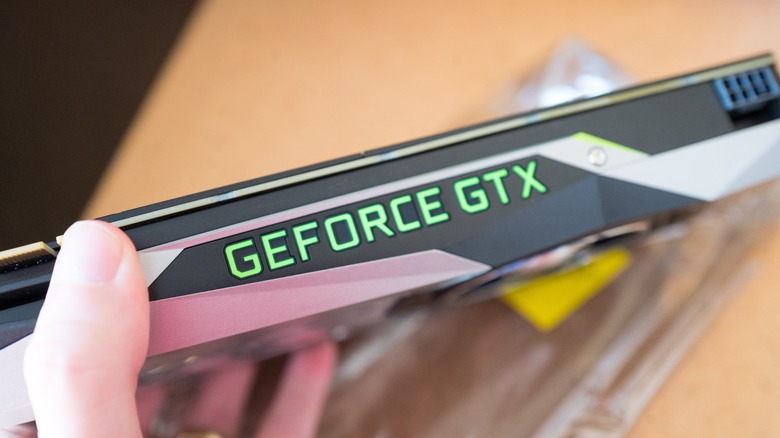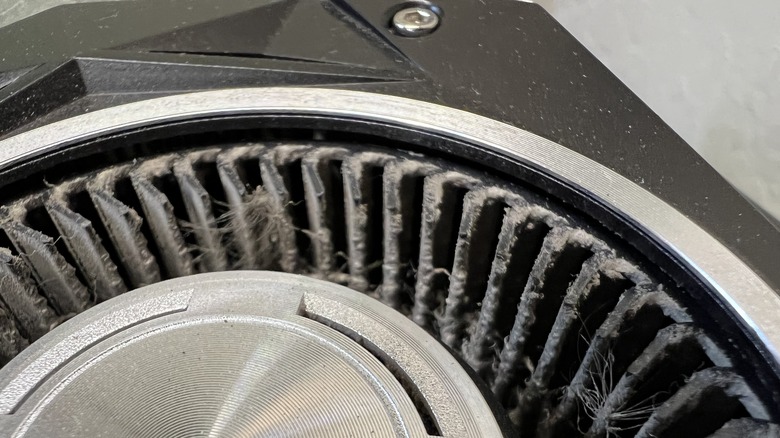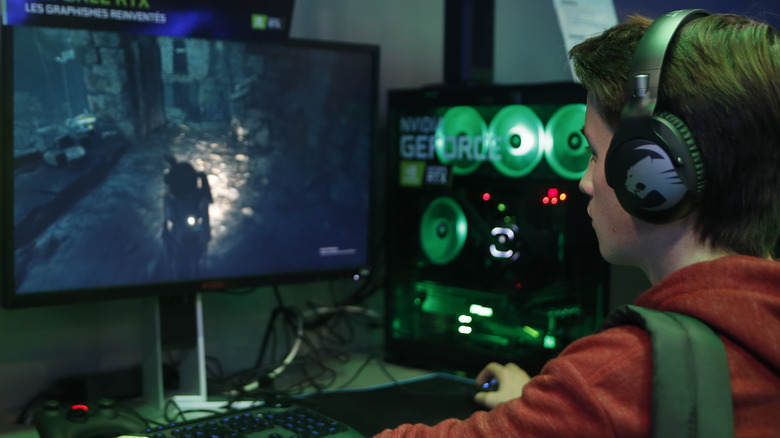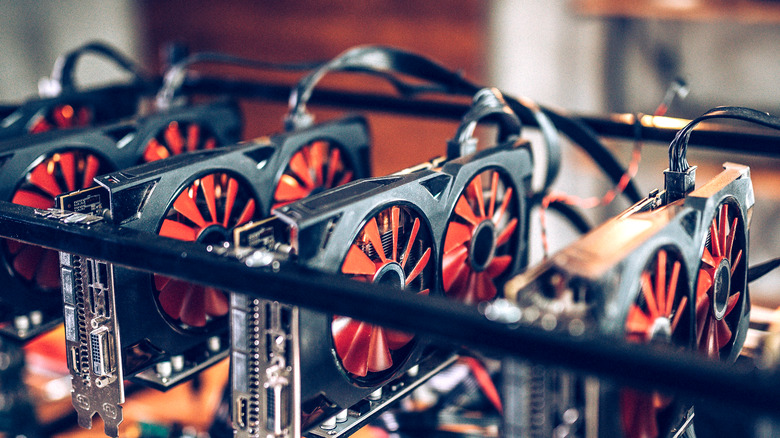Everything You Need To Know Before Buying A Used Graphics Card
It's no secret that high-end computer parts can be prohibitively expensive. Getting a beefy graphics card alone can take up the lion's share of your total build cost, but it's a necessity to play the latest big games or perform high-intensity rendering work. In this particular case, your first inclination may be to try and obtain a second-hand graphics card to knock a few bucks off the price.
However, while it is more than possible to get a good used graphics card, doing so can be a much more difficult process than just buying a fresh one. This isn't like buying a used toaster, after all — a graphics card is a piece of precision equipment that needs to be functioning just so, or you could risk the integrity of your entire build. If you're going to go on the hunt for a used graphics card, make sure you keep a few safety advisories in mind.
Buy only from trusted sources
As is the case with buying pretty much any used electronics or components, it's important that you know exactly what the device in question has been through before it comes into your possession. If someone offered to sell you a car, for instance, only for it to show up with four flat tires and a hole in the roof, you probably wouldn't want it. It's the same thing with graphics cards.
Graphics cards, like any PC component, gradually wear out over time. If someone was pushing a graphics card to its absolute maximum 24/7, especially for something like crypto mining, it's not going to have much life in it by the time it makes it into your hands. To ensure this problem doesn't happen to you, you should only purchase used graphics cards from trustworthy sources. If you're buying directly from a person, make sure it's someone you know and trust. If you're buying from a storefront, online or physical, check reviews and source opinions. The extra legwork will spare you the tragedy of finding your new graphics card on its proverbial deathbed.
Double-check dimensions
Not all graphics cards, even ones with the same designation, are the same physical size. Some are flatter and some are more brick-like in shape. If you're purchasing a used graphics card, make sure the part's precise dimensions are available to check against the size and internals of your PC case. It doesn't matter how good the price was- if it won't fit in your case, it's nothing but a paperweight.
In a similar concern, you should check your motherboard's PCIe slots, the physical slots that connect it to the graphics card. Different motherboards have different slots of varying shapes, sizes, and numbers, so you want to be sure that your prospective graphics card can fit the bill. Remember, if you were buying a brand-new graphics card, all of this information would be readily available. If it's not available on a used card, that's a major red flag.
Ensure compatibility
If you're looking to make a powerful PC, your first inclination is probably to get your hands on the most powerful graphics card you can find, and if you can get it at half-price, all the better. However, before you go buying the graphical equivalent of a Ferrari, you should ensure the rest of your rig can keep up. For one thing, if your CPU is lower-end, it may not be able to handle the graphics card's data influx, resulting in a performance bottleneck. All that VRAM is meaningless if your CPU can't process it. The same goes for your PC's power supply — it needs to output enough electricity to power the whole rig, which it can't do if the graphics card is sucking up all the juice.
You should also ensure your monitor is compatible with the graphics card's specs. You can't hook up a powerful modern graphics card to a tiny display from ten years ago — it wouldn't have a high enough refresh rate to properly display all the high-fidelity images coming from the card. You need a high-end monitor to go with a high-end graphics card, preferably one with support for any advanced features like NVIDIA's G-Sync.
Know your role
Generally speaking, graphics cards are divided into two broad categories: consumer-grade and professional-grade. When purchasing a used graphics card, you need to know right off the bat which of these grades it is. A consumer-grade graphics card is intended for leisurely stuff like playing the latest video games or watching 4K movies, while a professional-grade card is for intensive work like rendering 3D objects or full game development.
If you're purchasing a used graphics card from someone or somewhere, make sure they have the card's precise model designation. For instance, a consumer-grade NVIDIA card would have GTX or RTX in the name, while a professional-grade card would have Quadro in the name. If whoever you're buying from just says "I dunno, it's just really strong," that's nowhere near enough information to go on. A consumer-grade card can't handle detailed rendering, and a professional-grade card has too much muscle for a casual PC.




